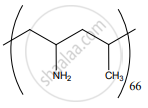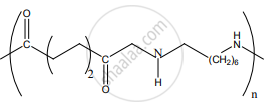Advertisements
Online Mock Tests
Chapters
2: p-Block Elements - I
3: p-Block Elements - II
4: Transition and Inner Transition Elements
5: Coordination Chemistry
6: Solid State
7: Chemical Kinetics
8: Ionic Equilibrium
9: Electro Chemistry
10: Surface Chemistry
11: Hydroxy Compounds and Ethers
12: Carbonyl Compounds and Carboxylic Acids
13: Organic Nitrogen Compounds
14: Biomolecules
▶ 15: Chemistry in Everyday Life
![Samacheer Kalvi solutions for Chemistry - Volume 1 and 2 [English] Class 12 TN Board chapter 15 - Chemistry in Everyday Life Samacheer Kalvi solutions for Chemistry - Volume 1 and 2 [English] Class 12 TN Board chapter 15 - Chemistry in Everyday Life - Shaalaa.com](/images/chemistry-volume-1-and-2-english-class-12-tn-board_6:5f2b1b2038084cf381bfa42c826a928c.jpg)
Advertisements
Solutions for Chapter 15: Chemistry in Everyday Life
Below listed, you can find solutions for Chapter 15 of Tamil Nadu Board of Secondary Education Samacheer Kalvi for Chemistry - Volume 1 and 2 [English] Class 12 TN Board.
Samacheer Kalvi solutions for Chemistry - Volume 1 and 2 [English] Class 12 TN Board 15 Chemistry in Everyday Life Evaluation [Pages 294 - 296]
Choose the correct answer:
Which of the following is an analgesic?
Streptomycin
Chloromycetin
Asprin
Penicillin
Antiseptics and disinfectants either kill or prevent growth of microorganisms. Identify which of the following statement is not true.
Dilute solutions of boric acid and hydrogen peroxide are strong antiseptics.
Disinfectants harm the living tissues.
A 0.2% solution of phenol is an antiseptic while 1% solution acts as a disinfectant.
Chlorine and iodine are used as strong disinfectants.
Drugs that bind to the receptor site and inhibit its natural function are called _____________.
antagonists
agonists
enzymes
molecular targets
Aspirin is a/an ____________.
acetylsalicylic acid
benzoyl salicylic acid
chlorobenzoic acid
anthranilic acid
Which one of the following structures represents nylon 6, 6 polymer?
Natural rubber has ____________.
alternate cis- and trans-configuration
random cis- and trans-configuration
all cis-configuration
all trans-configuration
Nylon is an example of ____________.
polyamide
polythene
polyester
polysaccharide
Terylene is an example of ____________.
polyamide
polythene
polyester
polysaccharide
Which is the monomer of neoprene in the following?
\[\begin{array}{cc}
\ce{CH2 - C - CH = CH2}\\
|\phantom{.......}\\
\ce{Cl}\phantom{......}
\end{array}\]\[\ce{CH2 = CH - C ≡ CH}\]
\[\ce{CH2 = CH - CH = CH2}\]
\[\begin{array}{cc}
\ce{CH2 = C - CH = CH2}\\
|\phantom{.......}\\
\ce{CH3}\phantom{....}
\end{array}\]
Which one of the following is a bio-degradable polymer?
HDPE
PVC
Nylon 6
PHBV
Non stick cook wares generally have a coating of a polymer, whose monomer is ____________.
ethane
prop-2-enenitrile
chloroethene
1, 1, 2, 2-tetrafluoroethane
Assertion: 2-methyl-1, 3-butadiene is the monomer of natural rubber.
Reason: Natural rubber is formed through anionic addition polymerisation.
If both assertion and reason are true and reason is the correct explanation of assertion.
If both assertion and reason are true but reason is not the correct explanation of assertion.
Assertion is true but reason is false.
Both assertion and reason are false.
Which of the following is a co-polymer?
Orlon
PVC
Teflon
PHBV
The polymer used in making blankets (artificial wool) is ____________.
polystyrene
PAN
polyester
polythene
Regarding cross-linked or network polymers, which of the following statement is incorrect?
Examples are Bakelite and melamine.
They are formed from bi and tri-functional monomers.
They contain covalent bonds between various linear polymer chains.
They contain strong covalent bonds in their polymer chain.
Short Answer Questions:
What are antibiotics?
Name one substance which can act as both analgesic and antipyretic.
Write a note on synthetic detergents.
How do antiseptics differ from disinfectants?
What are food preservatives?
What are drugs?
How are drugs classified?
How did the tranquilizers work in body?
Write the structural formula of aspirin.
Explain the mechanism of cleansing action of soaps and detergents.
Which sweetening agents are used to preparing sweets for a diabetic patient?
What are narcotic and non-narcotic drugs? Give examples.
What are antifertility drugs? Give examples.
Write a note on co-polymer.
What are biodegradable polymers? Give examples.
How is terylene prepared?
Write a note on vulcanization of rubber.
Classify the following as linear, branched or cross-linked polymers.
Bakelite
Classify the following as linear, branched or cross-linked polymers.
Nylon-6, 6
Classify the following as linear, branched or cross-linked polymers.
LDPE
Classify the following as linear, branched or cross-linked polymers.
HDPE
Solutions for 15: Chemistry in Everyday Life
![Samacheer Kalvi solutions for Chemistry - Volume 1 and 2 [English] Class 12 TN Board chapter 15 - Chemistry in Everyday Life Samacheer Kalvi solutions for Chemistry - Volume 1 and 2 [English] Class 12 TN Board chapter 15 - Chemistry in Everyday Life - Shaalaa.com](/images/chemistry-volume-1-and-2-english-class-12-tn-board_6:5f2b1b2038084cf381bfa42c826a928c.jpg)
Samacheer Kalvi solutions for Chemistry - Volume 1 and 2 [English] Class 12 TN Board chapter 15 - Chemistry in Everyday Life
Shaalaa.com has the Tamil Nadu Board of Secondary Education Mathematics Chemistry - Volume 1 and 2 [English] Class 12 TN Board Tamil Nadu Board of Secondary Education solutions in a manner that help students grasp basic concepts better and faster. The detailed, step-by-step solutions will help you understand the concepts better and clarify any confusion. Samacheer Kalvi solutions for Mathematics Chemistry - Volume 1 and 2 [English] Class 12 TN Board Tamil Nadu Board of Secondary Education 15 (Chemistry in Everyday Life) include all questions with answers and detailed explanations. This will clear students' doubts about questions and improve their application skills while preparing for board exams.
Further, we at Shaalaa.com provide such solutions so students can prepare for written exams. Samacheer Kalvi textbook solutions can be a core help for self-study and provide excellent self-help guidance for students.
Concepts covered in Chemistry - Volume 1 and 2 [English] Class 12 TN Board chapter 15 Chemistry in Everyday Life are Drug, Food Additives, Cleansing Agents, Introduction to Polymers.
Using Samacheer Kalvi Chemistry - Volume 1 and 2 [English] Class 12 TN Board solutions Chemistry in Everyday Life exercise by students is an easy way to prepare for the exams, as they involve solutions arranged chapter-wise and also page-wise. The questions involved in Samacheer Kalvi Solutions are essential questions that can be asked in the final exam. Maximum Tamil Nadu Board of Secondary Education Chemistry - Volume 1 and 2 [English] Class 12 TN Board students prefer Samacheer Kalvi Textbook Solutions to score more in exams.
Get the free view of Chapter 15, Chemistry in Everyday Life Chemistry - Volume 1 and 2 [English] Class 12 TN Board additional questions for Mathematics Chemistry - Volume 1 and 2 [English] Class 12 TN Board Tamil Nadu Board of Secondary Education, and you can use Shaalaa.com to keep it handy for your exam preparation.




